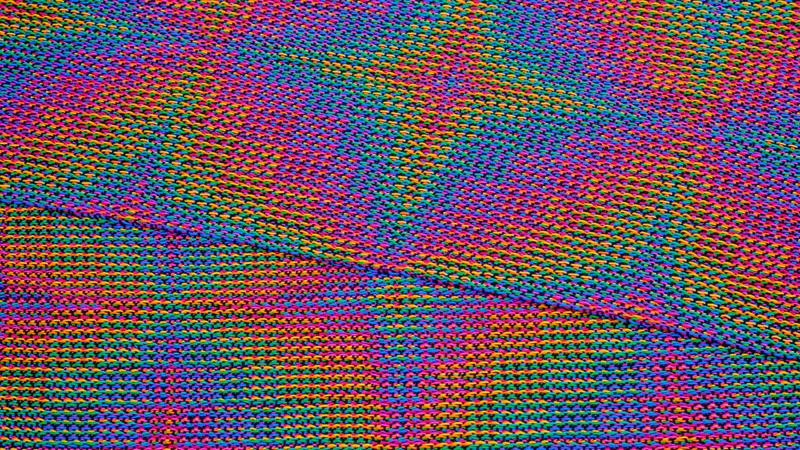After having woven my first shawl with 4 echoes, I find myself completely submerged in the echoes techniques set forth by Marian Stubenitsky in her book ‘Weaving with Echo and Iris’. I have so many things I would like to try out, that I can easily keep myself busy for months. So, I decided to be efficient and combine several experiments into one project. I wove my first shawl with 8 echoes — and experimented with color combinations and sett along the way.
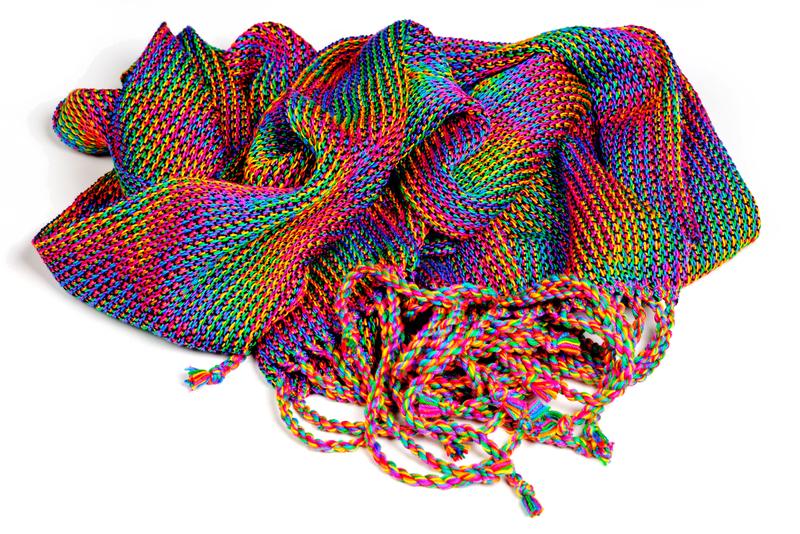
Completing the rainbow
With these echo techniques, you can obtain beautiful iridescent effects due to the interaction of the 8 warp colors. It is quite overwhelming to think about all the combinations of 8 colors that could be worth a try. You could go with bright colors, dark colors, pastels, or a combination thereof. This choice will have a big effect on the look of the project. For now, I really wanted to try out a bright rainbow, but I definitely see myself experimenting more with color combinations in future projects.
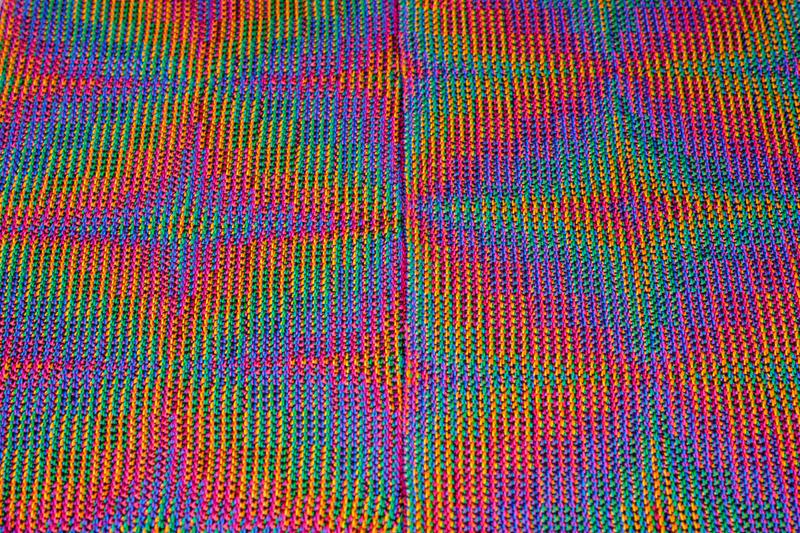
In my previous 4-echo-shawl, I chose a palette of pinks, greens, blues and purples. I decided to complete the rainbow in this project and to add red, orange and yellow. I stuck to the thin crochet cotton I used previously. Luckily, this cotton is available in a whole range of colors. So, for the warp I was able to go for a bright rainbow of pink, red, orange, yellow, green, turquoise, blue and purple. I was really curious to find out what iridescent effects would emerge. I went for a black weft, to give the interplay between the warp colors center stage.
Playing with sett
I never had too much of a problem choosing the right sett for a project. I usually work with knitting yarn of fingering weight or thicker and try to aim for a balanced weave with equal numbers of warp ends per cm (epcm) and weft picks per cm (ppcm). In these cases, the range of setts suitable for the yarn is limited. Depending on the weave structure and the type of projects, I would typically choose a sett of 60% to 80% of the number of wraps per cm. For example, when the yarn has 6 wraps per cm this amounts to a sett of 4 or 5 epcm; and 4 epcm would be my go-to sett for a shawl with a nice drape.
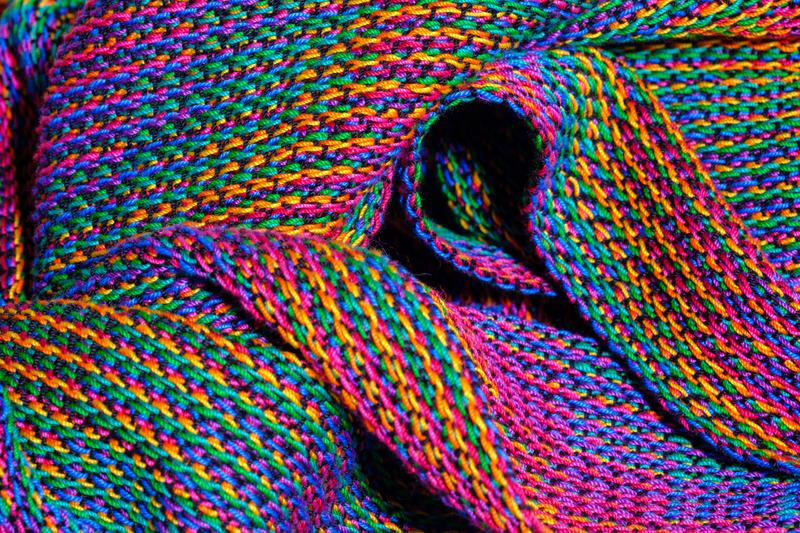
With a thinner yarn, the range of options increases. The crochet cotton I am working with has 12 wraps per cm, which would make setts of 7 to 10 epcm suitable options. I used a sett of 9 epcm for my 4-echo-shawl, which gave me a nice drape and a nearly balanced weave with 8 ppcm. Yet, given that the interplay of the warp colors is so exciting in echo weaving, I got curious as to what a warp-dominant cloth would look like. Instead of aiming for a balanced weave, I could go for more warp epcm and less weft ppcm. So, I turned up the sett quite a bit for this new project: I went with 12 epcm. I had no idea how the drape would turn out nor whether it would be suitable for a shawl — I was curious to find out.
Designing with 8 echoes
With the color palette and sett ready to go, I started to design an 8-echo pattern. Starting from a design line, you add seven parallel threads to every “thread” in the design line. This means that the number of warp threads grows quickly. A simple point-twill of 15 threads becomes a 120-thread motif. This would already amount to a 30 cm wide shawl at a sett of 4 epcm.

So, my choice of thin yarn and a high sett came in handy, as it allowed me to come up with a more intricate design line. I settled on one of my all-time favorites: a four-leaved clover, with the nice extra that star-shapes appear between the clovers. I expected to weave about 6 ppcm — half of the chosen 12 epcm sett. So, to weave to square, I needed a treadling sequence with half the number of total warp ends. I started with the original design line for the treadling and elongated it to made it 4 times as long. This gave me what I needed, as the original design line is expanded by a factor 8 in the warp. Then, I redrew the treadling on a network, to obtain a weavable pattern. In Fiberworks, the design looked beautiful in the rainbow palette — I was excited to start weaving.
Where did the clovers go?
When I started threading the heddles, I was a bit nervous as the 8 echoes were still somewhat intimidating to me. Yet, threading the heddles for the 8 echoes was very doable. There is a nice rhythm to the shaft sequence of the echoes, and the color sequence was not that hard to memorize. As a visual reminder, I put the leftovers of the warp yarn on top of my loom in the right color order. So, my nervousness faded away quickly and overall the process was very enjoyable.
Once I was ready to weave, the shawl grew quickly in length. My estimate of 6 ppcm turned out to be a good one, speeding up the actual weaving. I really liked the warp-dominant effect of the high sett. The warp colors grab most of the attention, but the black weft still adds considerably to the overall look of the fabric. It was fun to see both the clovers and stars take shape and the iridescence emerge.
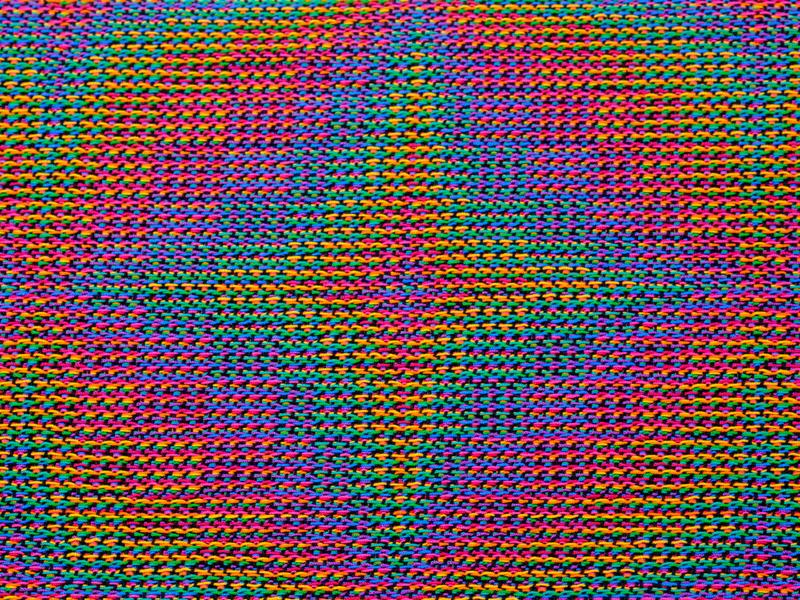

I designed the shawl with clovers in mind, but the stars were far more pronounced off the loom. Seeing the shawl in full, the stars are immediately visible and you really have to focus to see the clovers. I don’t really mind. Stars are also beautiful, after all. I am wondering whether a different color combination could lead to more visible clovers, but that is the subject of another experiment.
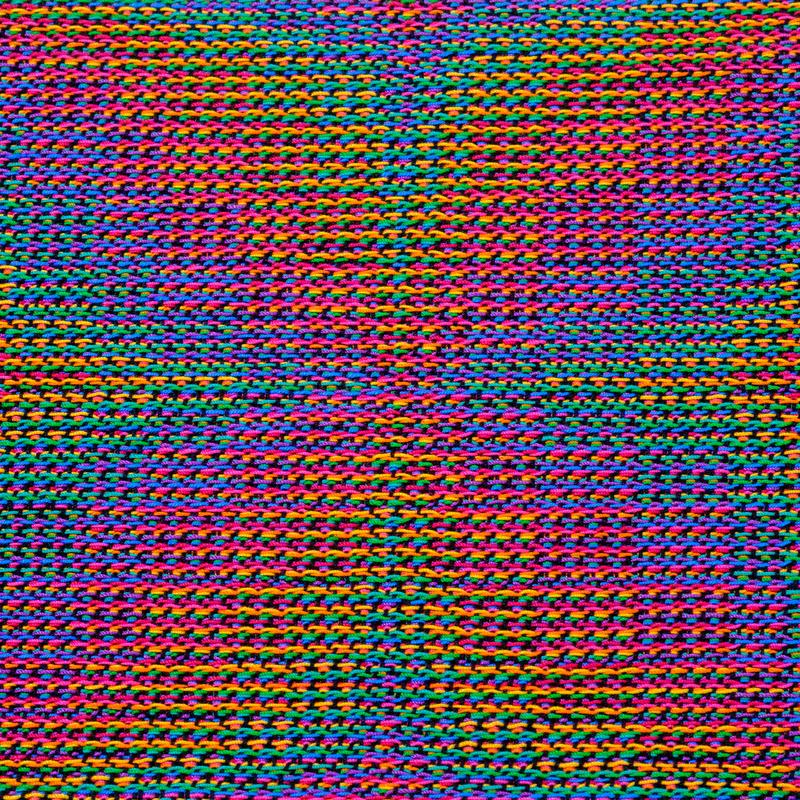
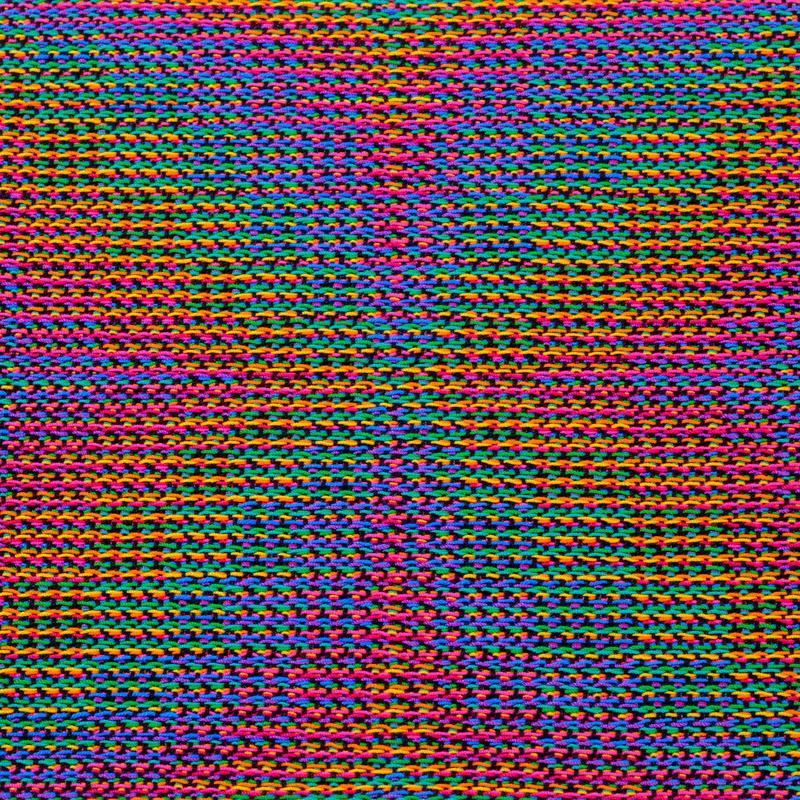
The cloth turned out a little sturdier than my previous shawl with 4 echoes, but it still has a nice drape and is usable as a shawl. Maybe I will try an even higher sett in the future, to get a sturdy warp-faced fabric that would make a great table runner. For now, I am happy with this experiment. I learned a lot about 8 echoes and setts and will apply this experience in projects to come.

